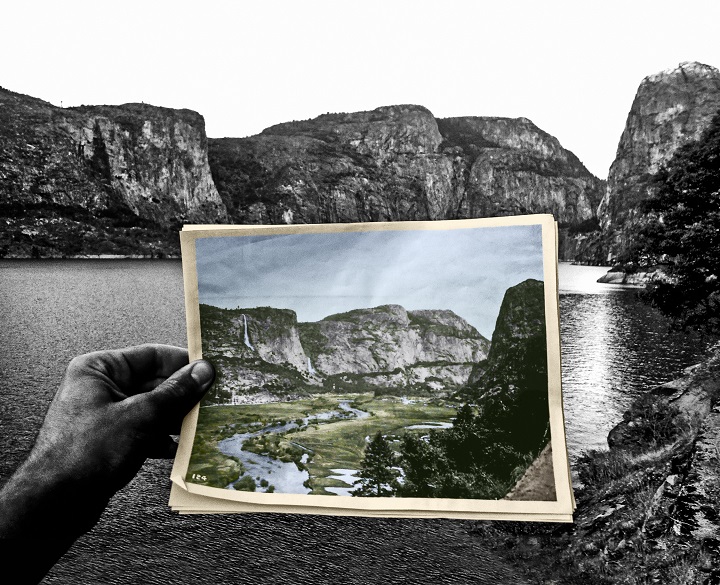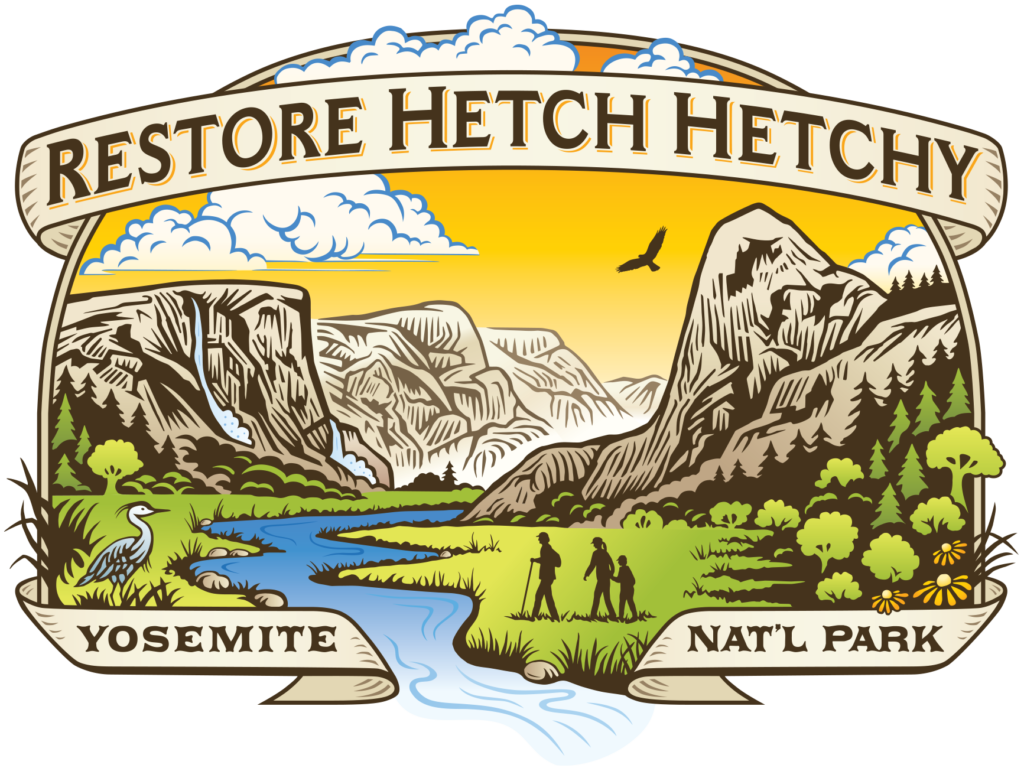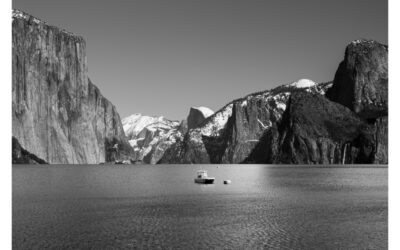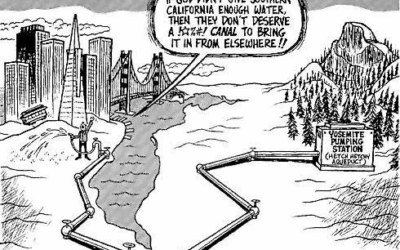Restoring Hetch Hetchy

Restore Hetch Hetchy promotes restoring Hetch Hetchy, Yosemite Valley’s lost twin, to its natural splendor; a majestic glacier-carved valley with towering cliffs and waterfalls where river and wildlife run free.
Hetch Hetchy can be a new kind of national park, with limited development, an improved visitor experience, shared stewardship with Native peoples, and permanent protection of its natural and cultural heritage for future generations.
Before Hetch Hetchy Valley was turned into a water reservoir in 1923, it was home to many Native Americans, both seasonally and year-round. It lay as a long slender valley that widened out as it moved west, deep below the granite cliffs of the Grand Canyon of the Tuolumne. Paiute people referred to the valley as Iyaydzi. In many ways it resembled Yosemite Valley, some referring to it as the “Tuolumne Yosemite,” having been shaped and carved out by the last glacial era. This great meadow was full of oak trees, grass, and deer. It is remembered by the old people as being an Indian paradise where their parents and grandparents once roamed. Naturalist John Muir referred to it as the home and stronghold of the Indians.
When Congress created Yosemite National Park in 1890, Hetch Hetchy was to be protected in perpetuity. In the early 1900s, however, San Francisco launched a campaign to dam and flood the valley. John Muir led the campaign to protect Hetch Hetchy Valley from inundation, and described it as “one of nature’s rarest and most precious mountain temples.”
In 1913, after battling for more than a decade, San Francisco won Congressional approval to dam and flood Hetch Hetchy, and to bury the extraordinary valley under 300 feet of water. Although the battle to stop the dam unsuccessful, the vigorous campaign inspired an international environmental movement to preserve and protect exceptional landscapes.
Modern improvements in water management provide the opportunity to move the reservoir and store the water downstream, outside of Yosemite National Park. Emptying the reservoir will create one of the most ambitious and exciting environmental restoration projects in human history. As a living laboratory, Hetch Hetchy will advance the science of restoration by providing biologists, ecologists and botanists from all over the world with the chance to apply cutting-edge science to re-establishing lost habitats.
Soon after the reservoir is emptied and the valley floor exposed, Hetch Hetchy could also serve as a classroom for teachers, students and volunteers to experience restoration first hand. Park visitors will come to Hetch Hetchy and watch the valley come back to life.
Within five years, native grasses and wildlife will reappear as the Tuolumne River reclaims its original channel. Willows and alders will quickly return to its banks and, soon after, Ponderosa pines and oak woodlands will begin to take root. As the habitat is restored, animals will migrate home and the twin of Yosemite Valley will re-emerge in the light of the 21st century.
Families from around the world will be able to return to Hetch Hetchy Valley year after year to witness a national treasure coming back to life.
The reservoir inundating Hetch Hetchy remains the greatest blemish in all of America’s national parks. It is time to return Hetch Hetchy Valley to Yosemite for all people to enjoy.
A slideshow of people involved in the history of Hetch Hetchy and Yosemite.
Our blog
Our flagship blog features analysis of news from our staff and announcements of upcoming events.
2025 Spring Newsletter and Robel Fessehatzion Art
Our Spring 2025 Newsletter has been delivered to mailboxes is also posted online here. If you would like a printed copy but have not received one,...
Big, Beautiful Bill – Land Out, Water In
The House of Representatives passed President Trump's "Big, Beautiful Bill" on Thursday by a single vote. It heads to the Senate where some say...
Congress members Launch Bipartisan Public Lands Caucus
The damming and flooding of Hetch Hetchy in Yosemite National Park looms large in American history as arguably the most infamous loss of public land...
Join us
Sign up to receive blog posts and other news by email.

Follow us
Stay up-to-date with breaking news and upcoming events.



